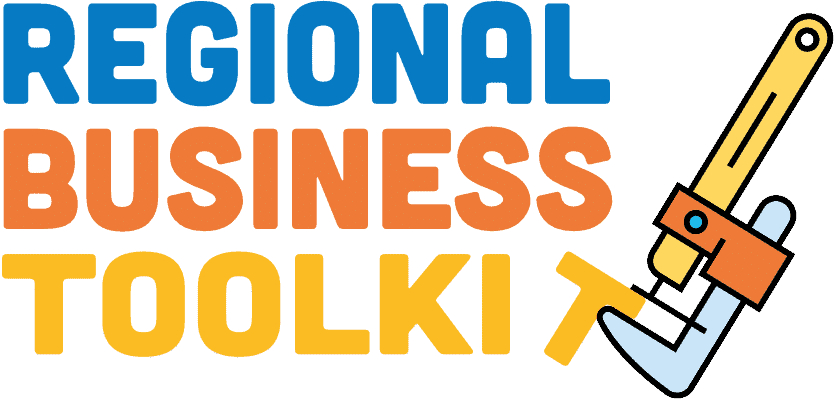What Questions Should I Include in My FAQ Section?
And Why Every Website Needs One
If you’ve ever answered the same question three times in a week — by phone, email, or Facebook message — your website probably needs an FAQ page.
For small businesses and community organisations, especially in regional areas, an FAQ section can be a game-changer. It saves time, builds trust, improves your Google rankings, and helps people take action more confidently — whether that’s booking, buying, donating or just reaching out.
Let’s take a look at what an FAQ page actually is, why it matters, and most importantly: what questions should you include?
What Is an FAQ Page?
FAQ stands for Frequently Asked Questions. It’s a section on your website that answers common questions people have about your organisation, services, or products. According to HubSpot, 81% of customers try to solve issues on their own before reaching out — and FAQs are one of the top self-service tools they look for.
Some websites have a dedicated FAQ page, while others include smaller FAQ sections on important pages like the Contact or Services page. Either way, it’s a space where people can quickly find clear answers — without needing to call or wait for a reply.
Why FAQ Pages Matter (Even for Small Organisations)
FAQ pages might seem optional, but they’re one of the most useful tools in your digital toolkit. Here’s why:
- They save time. Answer once, share often. No more repeating the same info across phone calls, emails or DMs.
- They build trust. When your website is open and transparent, people feel more confident engaging with you.
- They help people feel comfortable. For visitors who aren’t confident online or don’t know what to expect, a clear FAQ is like a friendly guide.
- They support your Google ranking. Search engines love pages that clearly answer specific questions using natural language.
- They reduce friction at the point of conversion. This is a big one. Whether someone is buying a ticket, making a booking, or signing up to volunteer — they often hesitate if they’re unsure about something.
FAQs are your chance to handle those concerns up front:
- “Is parking available?”
- “What if I can’t attend?”
- “Can I pay in instalments?”
- “What happens if it rains?”
By tackling objections directly, you’re helping more people complete the action — and reducing refunds, no-shows, or buyer’s remorse.
In short: FAQs are digital kindness.
They show you’ve thought about what people might need to know — and made it easier for them to say “yes.”
What Questions Should Your FAQ Page Cover?
This is the big one — and the reason you’re here.
Every organisation is different, but the best FAQs tend to fall into a few categories. Here’s a guide to help you identify the most useful questions to include.
✅ 1. The questions you get all the time
Think about phone calls, emails, social media messages, and conversations with customers or clients.
- “What time are you open?”
- “Can I book online?”
- “Do you offer gift vouchers?”
✅ 2. Questions that ease worries or objections
These are the ones that stop people from moving forward.
- “What if I can’t attend?”
- “Is there a refund policy?”
- “Do I need to bring anything with me?”
✅ 3. Questions about your process or timeline
People feel more confident when they know what to expect.
- “How long does delivery take?”
- “What’s the process for signing up?”
- “When will I hear back from you?”
✅ 4. Introductory questions from people new to your organisation
Especially important for non-profits or community groups.
- “How can I get involved?”
- “What does your organisation do?”
- “Is this service free?”
✅ 5. Values-based or impact-related questions
This helps people connect with your purpose.
- “Where does the money go?”
- “How do you choose your suppliers?”
- “Are you a registered charity?”
You don’t need 50 questions. Start with 5–10 strong, relevant ones — and build from there.
A Step-by-Step Guide to Creating an FAQ Page
- Gather your questions: Review your inbox, phone logs, social media comments — and ask your team what they’re asked most.
- Group similar questions: Combine or rephrase overlapping questions to keep things tidy.
- Write short, honest answers: Keep it clear and conversational. Avoid jargon.
- Use plain language: Aim for answers that someone with no background in your field would understand.
- Add it to your website: Create a standalone FAQ page or embed sections into relevant pages (like service or product pages).
- Keep it fresh: Revisit your FAQs every few months — especially if your services or hours change.
Optimising Your FAQ Page for Google
A well-structured FAQ page doesn’t just help people — it helps Google understand your content too. Here’s how to get the most SEO benefit:
- Use real questions as headings (H3s): e.g. “How much does delivery cost?”
- Answer clearly in the first sentence: Avoid burying the answer in a long explanation.
- Include keywords naturally: Think about what your audience would actually search.
- Use structured data (Schema): If possible, use FAQ Schema to improve your chances of showing up in rich results. Many WordPress plugins (like RankMath or Yoast) support this easily.
Bonus: Your FAQs Can (and Should) Be Used Elsewhere
Once you’ve created a solid set of FAQs, don’t let them gather dust on a single web page. Good FAQs are some of the most versatile, reusable pieces of content you’ll ever create.
Here are a few powerful ways to repurpose your FAQs:
- Add them to your Google Business Profile: Use the Q&A feature to answer common questions directly in search results — especially things like “Are you open on public holidays?” or “Do you have wheelchair access?”
- Turn them into social media posts: Each FAQ can become a post, story, or carousel tile. They’re perfect for engagement and help educate your audience without the hard sell.
- Include them in welcome emails or onboarding packs: For new volunteers, event attendees, or customers — having answers upfront helps reduce confusion and shows you’re organised.
- Print them out for your office or shop: Stick a copy near the front desk or phone so anyone answering enquiries gives consistent answers — especially helpful for part-time staff or volunteers.
- Use them in customer service scripts: If you use a chatbot, automated replies, or a help desk system, plug in your FAQs to ensure fast, accurate answers.
The takeaway? Your FAQs aren’t just helpful — they’re strategic. Once written, they can support your organisation across dozens of touchpoints, saving time and creating a smoother experience for everyone you serve.
How FAQs Support the Rest of Your Website
When written well, FAQs aren’t just an add-on — they support the entire customer journey. Here’s how:
- Homepage: Link to FAQs to reassure first-time visitors.
- Product/Service pages: Add tailored FAQs that reduce hesitation right before conversion.
- Contact page: Use FAQs to pre-answer questions and reduce inbox overwhelm.
- About page: Use mission-aligned questions to deepen understanding of your purpose.
Ready to Build an FAQ Page?
If you’ve been putting it off, here’s your sign to start.
Even a short FAQ section with five strong questions can make a big difference to how people engage with your website — and how much time you save behind the scenes.
If you’re not sure where to begin, or want help adding it to your site, we’d love to help. At Regional Business Toolkit, we specialise in helping impact-driven organisations and small businesses use digital tools to scale their impact — without the jargon or overwhelm.







